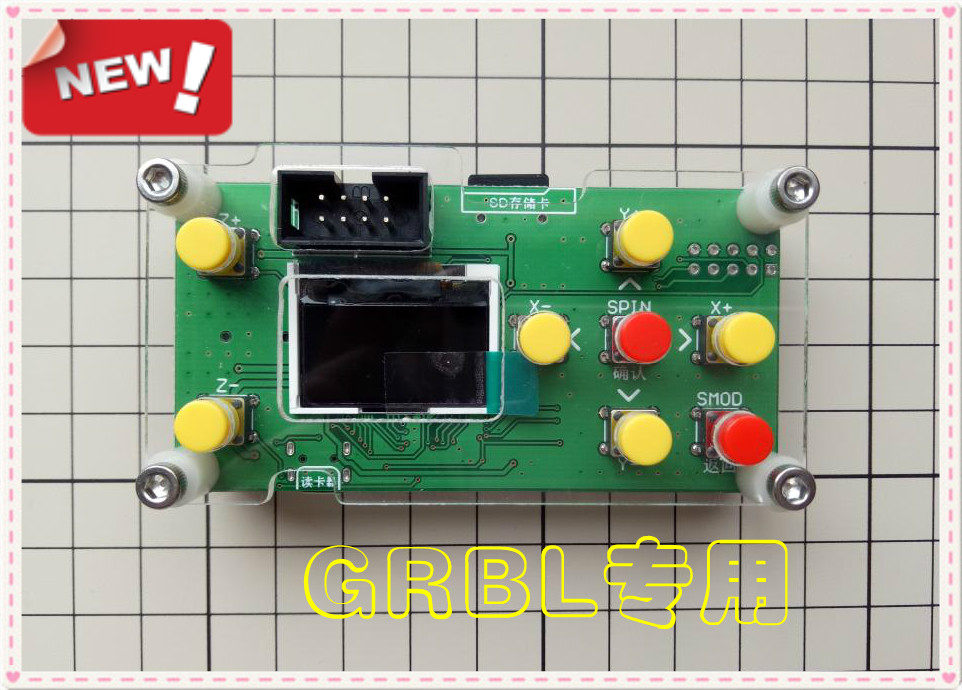
Normally I would keep downloads on github, but because github has stopped hosting binary/installer downloads as of January 2013, I have moved the installers to Amazon S3. Cnc4.dll. Windows installer should be straightforward. The Grbl Controller was built with MinGW and all required DLLs are provided. You will probably need to visit the to install USB serial drivers.
Grbl Controller is software that is designed to send GCode to CNC machines. I have modified the code to allow optional manual editing of the com port field. Grbl Controller, starting version 3.1, displays Grbl’s coordinates in the LCD displays. 11 thoughts on “ Grbl Controller Main Screen Options ” Kay on September 28, 2013 at 11:31 pm said: Hello, when i open my com port i get the Version of the grbl arduino. But there appears no status message. If you are willing to forgo some.
Mac has two installers, the 64 bit installer is for modern Mac OSX versions while there is one 32 bit Intel installer for older Mac Minis and Macbooks. Sorry, PPC is not provided. To properly run GrblController on the Mac, you will need to download and install the first! Note – I have decided not to host the Linux/Raspberry Pi installers as they are difficult to get running – I recommend you build the Grbl Controller using a. Version 3.2 No longer restarts COM connection, rather, position is maintained as long as possible. Button to zero position using gcode is used instead.
Position is now reported by requesting it from Grbl instead of computing it. Optional new “aggressive preload” mode sends commands as fast as Grbl can process them – Caution: motions may be faster than normal mode and will definitely see how good your stepper controller heat sink is! Version 3.0 Original version. Reinitializes COM port for every file send (a non-optimal solution to zeroing position). Hi, im new to cnc, and g code and arduinos, and iv recently assembled a shapeoko and am using grbl controller 3.2 to communicate with the arduino.

The problem I’m having is that when i try to execute a project the arduino tries to send the dermal out side its physical parameters. So my question is is there some sort of calibration process that the arduino needs to undergo in order for it to know the axis’ limits? Naresh malhotra marketing research ebook pdf converter. Iv read a little about arduinos (still hardly know anything) but it sounds like they need to be programmed before use. Is there an already produced code that i can just copy and paste to grbl controller? The most likely thing is you either have a short in the stepper driver shield or on the Arduino, most likely caused if you are milling metal – the tiny fragments can get onto the circuit board. Avoid milling metal or having the ardunio or shield near metal filings, or fully enclose the Arduinos (but with enough tiny ventilation holes, perhaps with foam to capture dust before it gets into the enclosure).
Another possibility is problems with the steppers. Here is how to diagnose: Try to see if your arduinos still work as ardunios.
Start with the UNO – make sure any shields are removed, try uploading the original Arduino firmware file with ArduinoUploader or similar app. The firmware files are found in C: Program Files (x86) Arduino hardware arduino firmwares atmegaxxu2 Start with Arduino-COMBINED-dfu-usbserial-atmega16u2-Uno-Rev3.hex, then try UNO-dfu_and_usbserial_combined.hex if that doesn’t work. Then use the Arduino IDE to upload the Blink example and make sure the LED blinks. Repeat same with the Mega 2560, but using a different firmware file. If all this works, then your Arduinos are working standalone. Next, upload the appropriate grbl hex files and connect with Grbl Controller – that should also work, Grbl Controller should be able to talk and you should see the version string and other output in the status window. If that works, then install the shield on one of the arduinos and repeat the test with Grbl Controller.